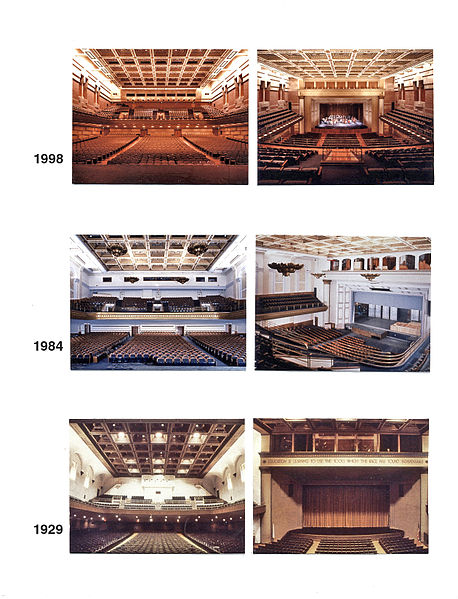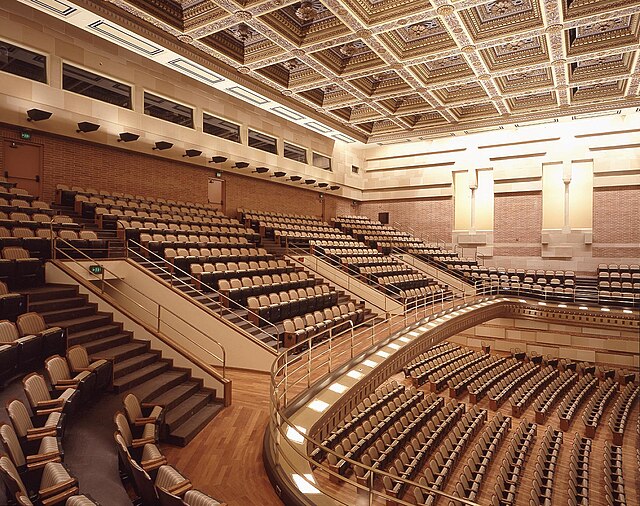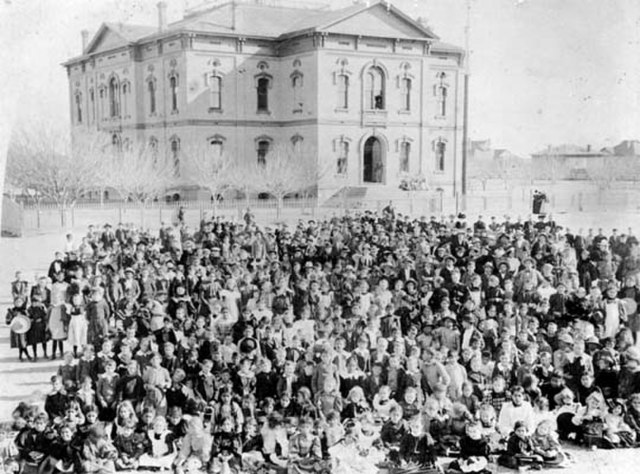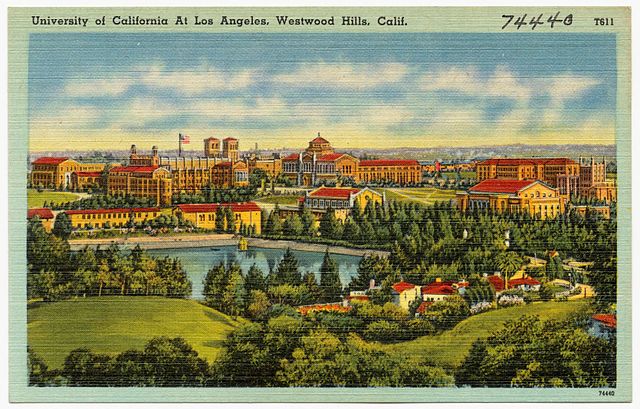Royce Hall is a building on the campus of the University of California, Los Angeles (UCLA). Designed by the Los Angeles firm of Allison & Allison and completed in 1929, it is one of the four original buildings on UCLA's Westwood campus and has come to be the defining image of the university. The brick and tile building is in the Lombard Romanesque style, and once functioned as the main classroom facility of the university and symbolized its academic and cultural aspirations. Today, the twin-towered front remains the best known UCLA landmark. The 1800-seat auditorium was designed for speech acoustics and not for music; by 1982 it emerged from successive remodelings as a regionally important concert hall and main performing arts facility of the university.
Main façade of Royce Hall, inspired by the Basilica of Sant'Ambrogio in Milan, Italy
Auditorium: 1929, 1984 and 1998
Auditorium during the Seismic Renovation, 1995
Auditorium, 1998
University of California, Los Angeles
The University of California, Los Angeles (UCLA) is a public land-grant research university in Los Angeles, California, United States. Its academic roots were established in 1881 as a normal school then known as the southern branch of the California State Normal School which later evolved into San José State University. The branch was transferred to the University of California to become the Southern Branch of the University of California in 1919, making it the second-oldest of the ten-campus University of California system after the University of California, Berkeley.
The Los Angeles branch of the California State Normal School, 1881.
Reginaldo Francisco del Valle was instrumental in the creation of the Los Angeles California State Normal School, predecessor to UCLA.
Southern Branch of the University of California's Vermont Campus, 1922.
Postcard c. 1930 to 1945 of the new Westwood campus.








